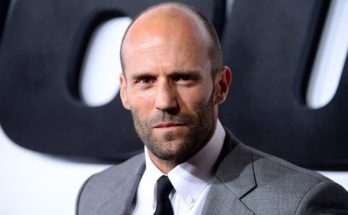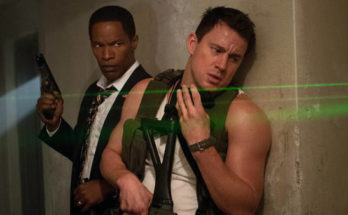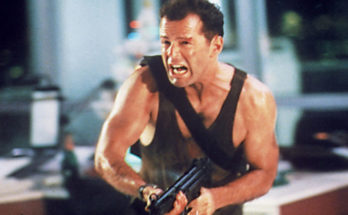The Man with No Name in a Film with No Purpose
In Drive, Ryan Gosling plays a man who isn’t given a proper name. He’s known only as Driver. It’s a fitting description, given the way cars factor into his daily life. By day, he works for a mechanic named Shannon (Bryan Cranston) and is an occasional Hollywood stunt driver. By night, he’s a wheelman for criminals in need of a quick getaway. Although he’s not a warrior in the traditional sense, Driver is as starkly developed as a samurai – narrowly focused, deeply committed, an expert at what he does, and completely impenetrable. Well, almost completely; although his face never changes expression apart from the occasional smirk, and although he so rarely says what he feels (you can count on one hand the number of lines Gosling delivers), he opens himself emotionally for his neighbor, a woman named Irene (Carey Mulligan), and her young son, Benicio (Kaden Leos), both of whom will inevitably wind up in danger.
Warriors are traditionally elusive and sealed, which is part of their mystique. But there’s a very fine line between mystique and underdevelopment, and I think this movie crosses it. Not only is Driver maddeningly unsolvable, he also has no plausible reason for being the way he is. When it comes to a samurai character, suspension of disbelief is easy; the audience is free to assume that he has been conditioned his entire life in the ways of an assassin. The same cannot be said for a man trained to do J-turns and powerslides. When it comes to someone like that, a behavioral explanation is mandatory. Exactly who was Driver before moving to Los Angeles? On the basis of what he does during the latter portions of the film, the possibilities are more than a little disturbing. But therein lies the problem: They’re only possibilities. What I really wanted, above all else, was something concrete.
So far as I can tell, Driver is a deus ex machina – a character at the mercy of a contrived situation he has no connection with. If there are any personal reasons for his vested interest in Irene and Benicio, they have been kept from the audience. Regardless, he’s dropped into the middle of their drama and works tirelessly towards freeing them from it. It starts when Irene’s husband, Standard (Oscar Isaac), is released from prison; although he clearly loves his family and has promised never to get back into a life of crime, an unpaid debt threatens his life and the lives of his wife and child. Driver decides to help by masterminding a heist. I will not divulge specifics, but as is the case with most movies of this sort, something goes horribly wrong. In due time, two notorious mob bosses (Albert Brooks and Ron Perlman) have put a contract on Driver. It’s not just a matter of saving Irene and Benicio; now he must also save himself.
Drive, adapted from the novel by James Sallis, is a slow, improbable, manufactured, unrewarding action thriller that’s highly inconsistent in tone. It begins as an unsolvable character study, one that gets murkier once Mulligan factors into the equation. She and Gosling play characters who exhibit none of the emotions that are supposedly drawing them together. They’re falling in love, and yet it’s for reasons known only to them – or, more accurately, to the filmmakers. Every line they deliver to one another is a strained, almost passive aggressive attempt at keeping their true feelings hidden; I could only take this for so long before desperately wishing that one of them would directly say something, anything, to the other. The film eventually devolves into a brutal crime drama, depicting acts of violence that would be far better suited for a grindhouse exploitation film.
There isn’t much to Perlman’s character, who can only be counted on to look like a gigantic brute and swear like a sailor. There is, however, a saving grace in the casting of Brooks, who handles his role well despite not typically being associated with action thrillers or mob dramas. And then there’s the car chase sequence, a skillful combination of special effects, editing, and sound effects. I grant you its technical merits. That being said, I must admit that car chases in general don’t do very much for me. Apart from the rather showy display of stunt work, they contribute absolutely nothing to a story. In my mind, they belong on the same shelf with martial arts and synchronized swimming – spectacles that exist for no reason other than to be themselves.
But it seems that I have no idea what I’m talking about. Apart from the glowing prerelease reviews, the film was a major hit at this year’s Cannes Film Festival, earning a nomination for the coveted Palme d’Or and a Best Director win for Nicolas Winding Refn. Since I apparently don’t get it, you’d probably be better off trusting someone else’s opinion. For my money, Drive does not have a reason for being, apart from an excuse to resurrect the Man with No Name. Such characters are difficult for me to buy into, in part because they live by ambiguous moral codes, but mostly because they thrive on tiresome story setups that have no basis in reality. In the case of Driver, I might have forgiven him his status as a plot device if I had been allowed to know him on a deeper level. That’s the funny thing about characters – the more you know about them, the more they resonate.



